Catwoman and Batman: Her History Isn’t As Reliant On Him As It Seems
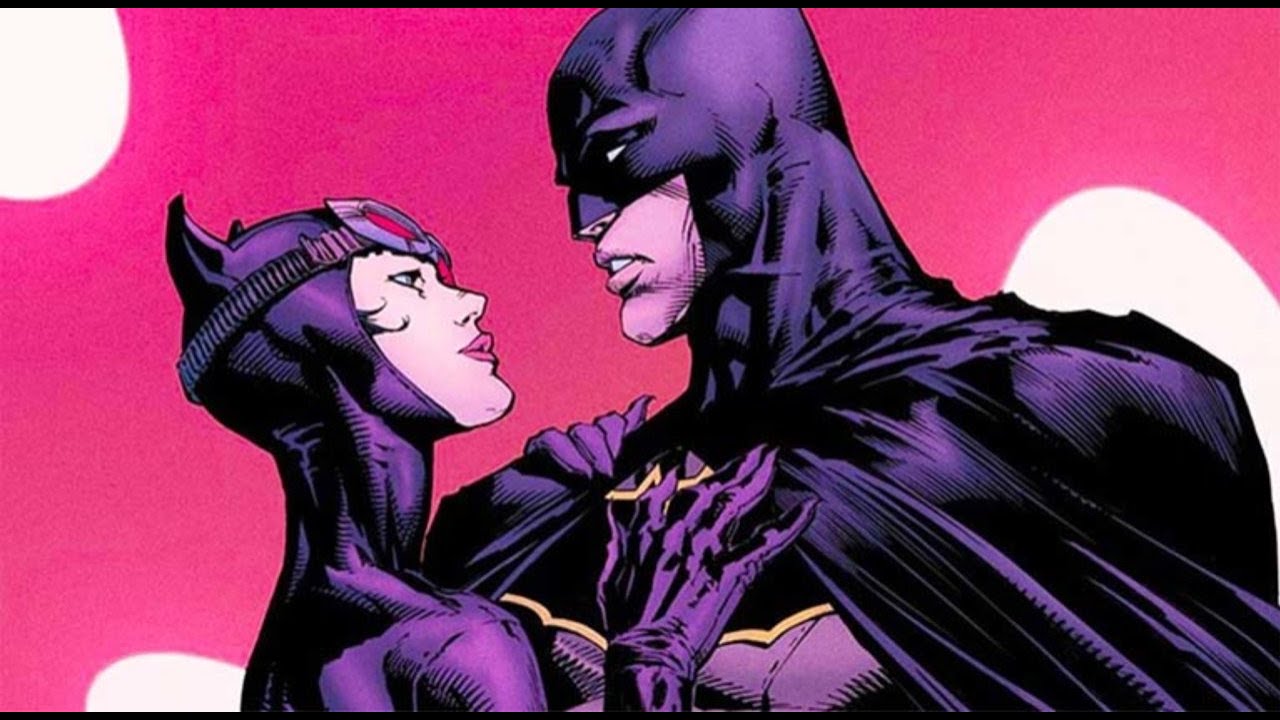
Usually, a character whose history has reached more than 70 years
Debut
Catwoman debuted in 1940 to little fanfare. This isn’t due to anything she did or didn’t do but instead, it was commonplace for the time. The age of superheroes wasn’t upon the world. It was close but wasn’t quite there. So, when heroes and villains appeared for the first time, it was often the first and only time they’d appear.
Catwoman’s debut was so unspectacular that she didn’t even go by the name Catwoman. In her initial appearances, Selina Kyle actually took the name The Cat and paraded around Gotham robbing from the rich and giving to the poor. If this sounds like a certain Prince of Locksley, you’d be right. Selina Kyle was a Pet Store owner by day and cat burglar by night. Little did anyone know but this clever yet simplistic nuance would define exactly who she was for the next 70 years.
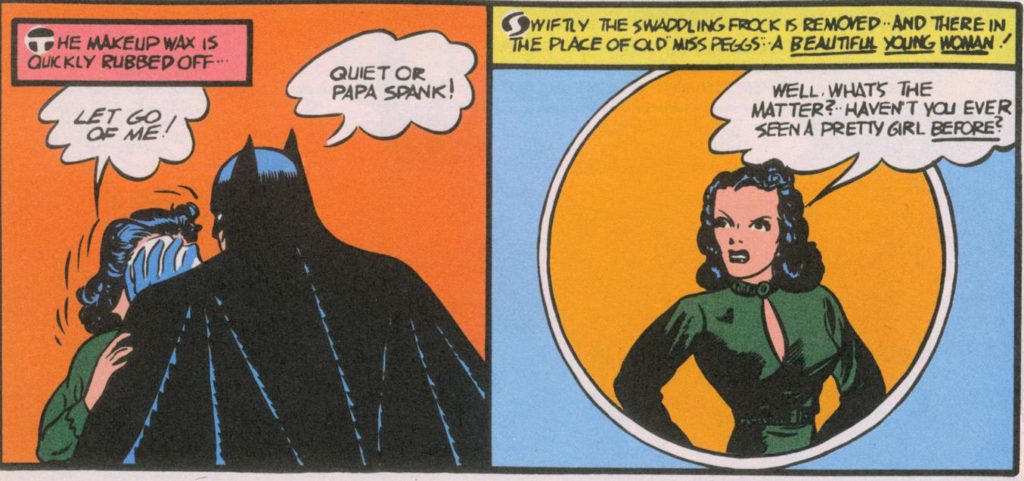
The Cat, with no real way of hiding her identity, eventually transitioned into a cat-mask wearing villain. And it was as The Cat that she showed sparks of what she and Batman would become known for.
Of her creation, Bob Kane said this, “So Bill and I decided to create a somewhat friendly foe who committed crimes, but was also a romantic interest in Batman’s rather sterile life. She was a kind of female Batman, except that she was a villainess and Batman was a hero. We figured that there would be this cat and mouse, cat and bat byplay between them—he would try and reform her and bring her over to the side of law and order. But she was never a murderer of entirely evil like the Joker.”
Yes, as history would come to show, Catwoman was the female version of Batman. She teetered on the edge of good and evil, dealt with injustice in ways that were outside of the law, and answered to nobody. However, at this time nobody knew exactly how important she would become.
Of all the traits laid down, none were arguably more important than the way in which she flirted with being Batman’s partner. A recurring theme developed around her not so subtle way of having him join her. She wanted him to come to her side of the law rather that she to his. Of course, this nearly never happened and more often than not, she joined him.
Catwoman was as different from other villains then, as she is now. Sadly, for all the groundwork she ways laying during the 1940s and early 1950s, she was about to disappear. The 1950s saw the comic book industry take a major shift…one that would almost cripple it.
Seduction of the Innocent
By the end of the 1940s and into the 1950s, comic books were swinging away from the superhero genre and into every other genre imaginable. Horror, sci-fi, western, romance, and fantasy books littered the newsstands. Children didn’t want superheroes. And with the shift in genres came the watchful eye of Fredric Wertham.
By 1953, there was a growing concern that comic books might be responsible for the increase in juvenile delinquency. As a consequence, the United States Senate Subcommittee on Juvenile Delinquency was formed and from it, comic books came under attack. In 1954, Wertham released Seduction of the Innocent and forever changed the industry. The book claimed that comic books promoted homosexuality, S&M, violence, and extreme gore. Of everything the book said, none affected Catwoman more than his claim that crime comics caused the readers to cheer for the villains. This meant that, according to Wertham, in crime comics, the heroes were actually the villains.
And it didn’t end there.
He went on and created an argument stating that the crimes in the pages of the books were a guide on how to actually commit a crime. Yes, how to commit a crime. Of all the traits that comic books had, none affected Catwoman more than committing crimes.
Catwoman was a burglar. Committing crimes is what she did. And she did them in ways that made it look both easy and awesome. If that was the only thing that came under fire, she probably would’ve survived Wertham’s wrath. Unfortunately, it wasn’t. She was also poorly viewed because she often got away with her crimes. After her appearance in Detective Comics #211, Selina Kyle disappeared from mainstream comic books for 12 years.
Batman television
Just because Selina Kyle was gone from comics doesn’t mean that she was gone from everywhere. Quite the contrary. Selina often made appearances on the much-beloved and maligned Adam West-led Batman television series.
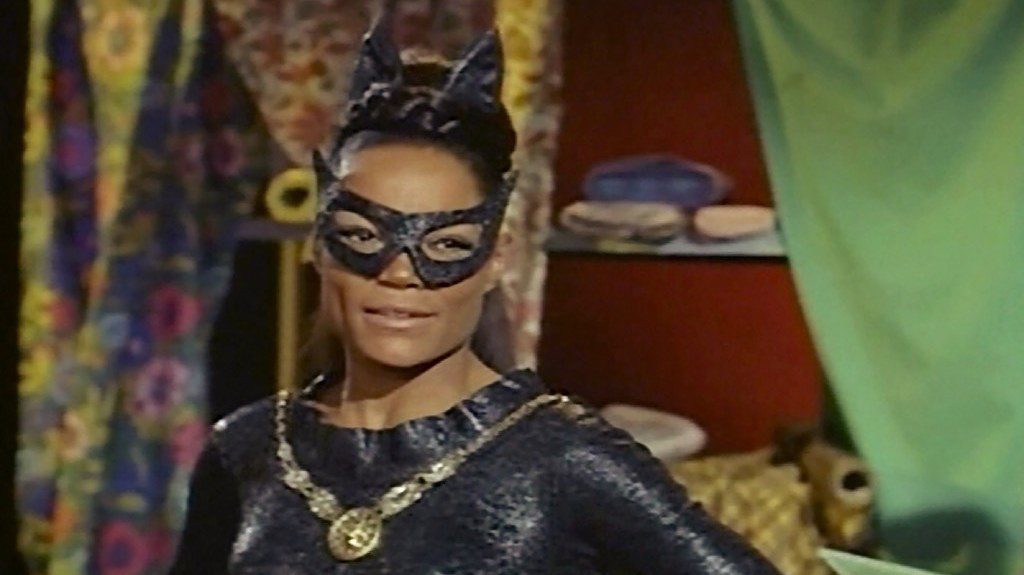
Catwoman, played by each of Eartha Kitt, Julie Newmar, and Lee Merriwether made more than her fair share of appearances on the show. In this iteration, Selina was similar to her comic counterpart. She was a cat burglar who, although flirty with her adversary, always fell to Batman’s crime-solving abilities. Each of the women who played her brought their own unique qualities to the character and each helped solidify her as an important character in Batman’s world. The Catwoman and Batman dynamic were back and back in a big way.
Her popularity on the show no doubt helped her. After twelve years of obscurity, she returned to comics. Her return, however, was marred with issues and problems. After a twelve year absence, DC didn’t know what to do with her.
Eventually, a decision was made to create a number of stories set in an alternate reality. In this reality, Selina Kyle and Bruce Wayne were married and she gave birth to their daughter. This simple, yet incredibly important story, continued to build on the foundation that had been laid more than twenty years before. Catwoman presented an interesting dynamic to Batman. She, for as criminal as she could be, for all she stole, and for those whom she hurt, was the one character who he was incapable of hurting or apprehending. She represented both his desire to have a family and uphold the law. That is, she was everything his personal life desired but his “professional” life wouldn’t tolerate.
Frank Miller
Frank Miller’s Year One is widely regarded as one of the best Batman stories to have ever been written. It’s dark, violent and explains exactly how Batman came to be. Within it, however, is also one of the most shocking character turns in comics. From the early days of her history, Selina Kyle was depicted as a jewel thief and socialite. Nothing more. Nothing less. When Frank Miller took hold of her, he transformed her into a prostitute whose specialty was bondage and S&M. And with it came the sexual innuendos and tensions that she and Batman were known to have 40 years earlier.
“Do I have to purr in your ear?” she says. “No, but maybe later you could scratch my back?” he responds. And without missing a sexual beat, she fires back, “What’s the matter? No itches in the front?”
Miller knew his audience. He knew that comic books were predominantly being bought by teenage boys. Due to this, he catered his every word, every panel, and every image to exactly what a teenage boy would want. Catwoman had transformed into a symbol of sex. She wore skintight latex, had a lust for violence, and a temperament to go along with both. This Catwoman, unlike the versions before her, also played into the notion that she did not need Batman. She was strong, independent and fierce. She was a rallying point for women all over the world. No point showed this more than when she laid her pimp to the wayside. The 1980s grew Catwoman up in a way that nobody had done before.
And she was only getting started.
Mindy Newell
If the 1980s grew the character up, the 1990s gave a dimension to her that had never been seen before. For arguably the first time in her existence, Catwoman was not a hero, not a villain, and not an anti-hero. She fell somewhere in between all of these. She was a character who stood up for the middle class. And she advocated for them and became, in effect, a voice for the voiceless.
The 1990s saw Mindy Newell, a former psychiatric nurse, take Selina Kyle to heights she had not been before. This Selina Kyle wasn’t as reliant on Bruce Wayne or Batman as her past personas had been. Newell knew that each of Selina Kyle’s past iterations, save for Miller’s, had a backstory thinner than tissue. Therefore, the first order of business was to give her a backstory.
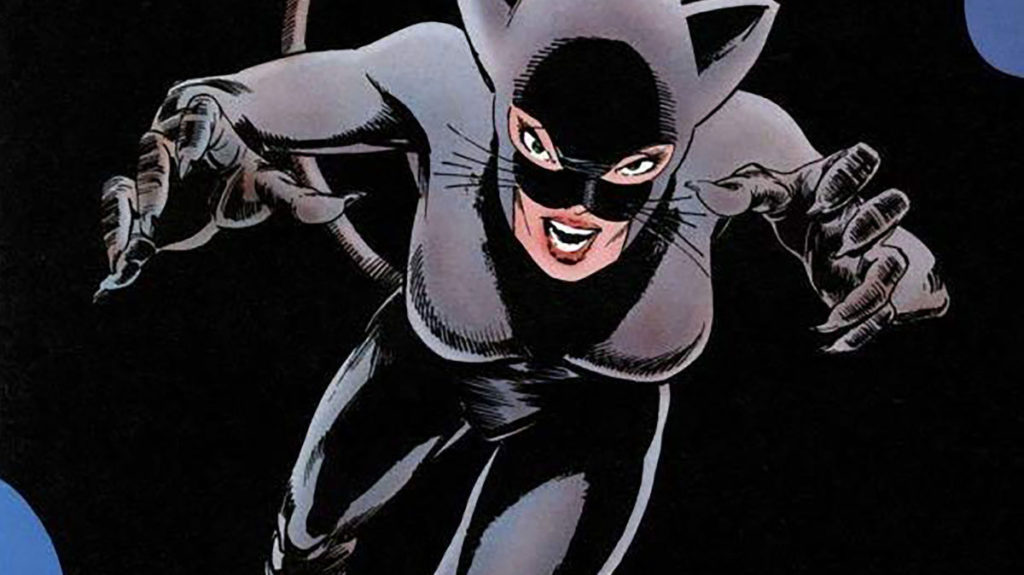
Between Miller and Newell, Selina Kyle had an alcoholic father, a mother who committed suicide, a sister, and most importantly, a best friend who was a former drug user, a prostitute, and was in a same-sex relationship. Almost amusingly, each trait that was given to her family and friends, was a direct shot at Fredric Wertham.
Tim Burton
Tim Burton’s first Batman movie was as classic as classic can get. It had all the elements required for a good Batman movie.
- Good actors
- Great villain
- Dark Gotham
- Gadgets
- Batmobile
The movie, without overemphasizing its importance, changed superhero movies. It helped bring in a new age of comics and changed the medium in ways that hadn’t been done in decades. Too often I find myself critical of comic book movies but with Tim Burton’s Batman, I really don’t have grounds to be critical on. With the success of Batman, a sequel was ordered up.
The sequel sought to expand on the Batman universe and to do so, it brought the heavy-hitting villains, Penguin and Catwoman. Michelle Pfeiffer’s Catwoman epitomized everything that the comic books were changing her character into. As Selina Kyle she was a psychological mess and unable to deal with the trauma’s in her life. When she put on the Catwoman costume, however, she magically transformed into the exact opposite. The movie pulled directly from the pages of what Frank Miller and Mindy Newell were doing and had done.
Michelle Pfeiffer’s performance was something that hadn’t been done before with the character. She brought a sense of calm, power, sophistication, and emotional instability to Catwoman. From an outsiders perspective, she, clad in tight leather, may have appeared to be included for her sex appeal. Those who have seen the movie, know otherwise.
Her popularity was at an all-time high and DC wanted to do everything in its power to capitalize on it. In 1993, DC gave the go-ahead to launch a brand new comic book series focusing only on her. This meant that for the first time in Catwoman’s existence, she starred in her own comic book series. The book launched to much fanfare and stayed that way for much of its run. It lasted an astounding 94 issues and ran from 1993 – 2001. To put its success into perspective, many of today titles don’t even make 20 issues.
And then as she was climbing the ladder she so deserved, somebody cut the legs off of the ladder.
Catwoman
During the entirety of her existence, no year provided more frustration than 2004. Of course, I refer to the disastrous Catwoman Movie. The movie was a dramatic departure from everything that made the character what she was. Not only was it goofy, campy, and cringe-worthy, it contains one of the worst basketball scenes in cinematic history.
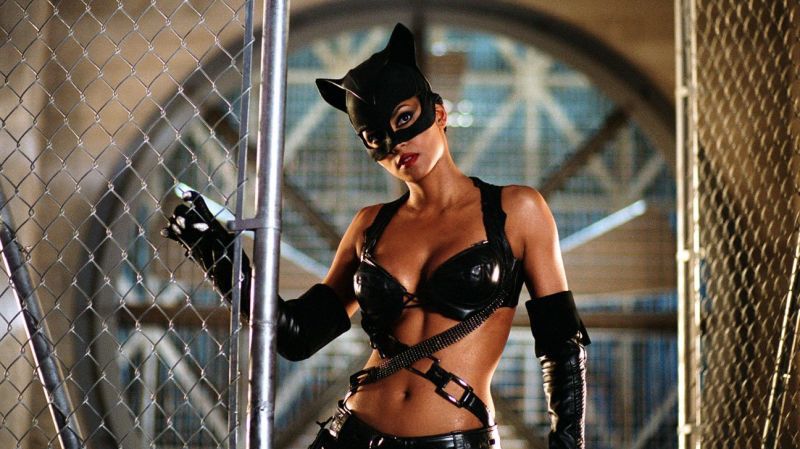
Catwoman was ostracized by critics and fans alike. Most couldn’t get past the terrible acting but for those who could, they left infuriated by the over-the-top reliance on CGI. It was everywhere. Fight scenes. Acrobatics. Touch ups. Even if the movie were half-good, which it wasn’t, the terrible CGI would’ve doomed it to fail.
The Catwoman character spent decades building a tower that the strongest forces in the world couldn’t topple. She spent her time showing the world that she was a self-assured woman who advocated for those who couldn’t. Halle Berry’s Catwoman, who, by the way, didn’t even have the name Selina Kyle, nearly toppled the tower.
After the debacle that was the Catwoman movie, something big needed to happen.
Enter Ed Brubaker
When Brubaker came into the fold, Catwoman was in a state of flux. She had lost her identity and was caught in a place undeserving of any character with a history as long as hers. Of the stories that were being written he said, “Well, I don’t personally dig it. I think it’s kind of insulting to women readers, and I don’t know if it’s aimed at women readers, but she’s a really great character. I love the Catwoman stuff from the ’60s and ’70s, and I love Batman: Year One.”
He suggested to then Catwoman editor, Matt Idelson, that he should “figure out a way to get her back to those East End roots, but then add that classiness of the high-society thief to it.” Idelson immediately asked a question that would change the character forever. “Do you want to write it?” Brubaker teamed up with Darwin Cooke and Catwoman was immediately rebooted with issue #1.
The duo did something that very few had successfully done before. They grounded the character and made her real. His story centralized itself on three things. First, it was a clever heist story that saw the thought dead (at the hands of Catwoman) Selina Kyle return to Gotham. Second, the development of Selina Kyle as a character. This included her protection of the defenceless inhabitants of the East Side thereby bringing focus on her Robin Hood persona. And third, the relationship between Selina Kyle and her former protégé, Holly.
In Frank Miller’s Year One, both Holly and Selina were prostitutes turned nuns. Brubaker and Cooke retconned this. Aside from giving her arguably her best costume to date, the duo told a story that ventured around Holly’s homosexuality. Yes, this may seem non-consequential, but remember, when this book launched the idea of homosexual characters wasn’t the norm.
Their work was so well received that they won a GLAAD award for one of the books.
Marriage
By the end of the 2010s, Catwoman and Batman had reached an all-time high. Their attraction to one another became the focal point of many of their encounters. Their relationship was so important that it fell third only to Robin and his dead parents. This led to the moment most fans have been clamoring for…the day the two would wed.
Bruce Wayne proposed in Batman #24 and she finally answered “yes” in Batman #32. In a way that only Selina Kyle could, she added one more layer of intrigue to her character. She backed out of the wedding.
And why?
She claimed that when his parents died, he was left with a loveless void. This, more than anything else, fuelled him to become Batman. If she were to go through with the wedding, the void would be filled and Batman would have no reason to exist. As gut-wrenching as it may seem, it makes perfect sense. Therefore, Catwoman and Batman never happened. Or at least Catwoman and Batman didn’t happen in the way that fans wanted it to happen.
Selina Kyle is one of the most interesting characters in DC Comics. While her early years weren’t her most memorable, once returned from her decade-long hiatus, she cemented herself as one of the most important relationship in Batman’s life. Unlike many other characters, she has a history as deep as any ocean in the world. She gives to Batman what children give to their parents…meaning to life. She has endured because she needs to endure.

